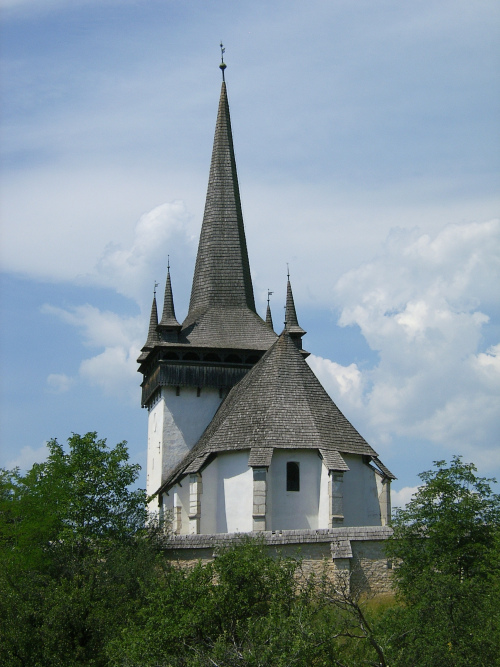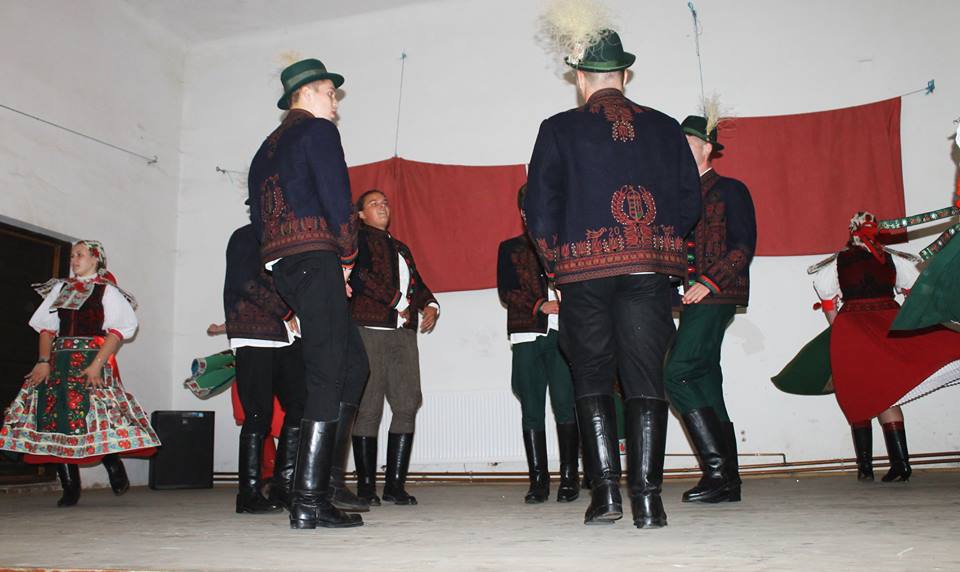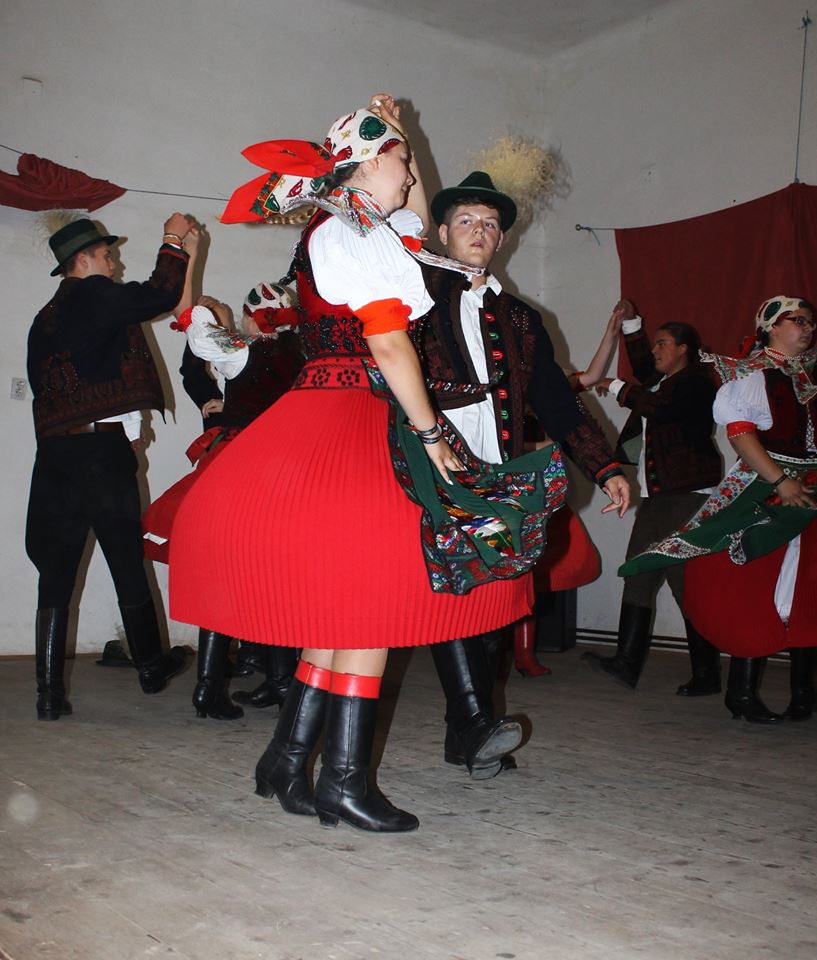There is a region situated west of the city of Kolozsvár (Cluj-Napoca) that is still regarded as a stronghold of Hungarian folk traditions. This region is called Kalotaszeg (Land of Călata), and it consists of the territories stretching on the two sides of the railway line Kolozsvár-Nagyvárad (Oradea), and of the motorway heading west from Kolozsvár, bordered also by the Gyalui havasok (Gilău Mountains), by the Vlegyásza (Vlădeasa) and the eastern leg of the Meszes (Meseş) mountains.
According to historical tradition, the name Kalota was the name of the Hungarian clan which created establishments on these territories in the early middle ages around the turn of the 9th-10th century. The name of the region, in its oldest form, Kalathazeg is mentioned for the first time in a deed from 1433, but some villages – that still exist today – appear even in 12th century documents.
Kalotaszeg consists of three main parts: the upper region, called in Hungarian Felszeg, below the western legs of the mountains, the lower region, Alszeg alongside the Almás (Almaşu) creek, and the parts stretching along the Nádas (Nadăş) creek.
During medieval ages, some parts of Kalotaszeg were the property of the Hungarian kingdom, some belonged to ecclesiastic institutions, and large lands were the property of Hungarian noble families; many of them were patrons of villages and churches throughout the following centuries.
Turrets and hand-painted ceiling-cassettes
Kalotaszeg has a characteristic ecclesiastic architectural heritage: churches with four small turrets on the main western tower(s), and a specific wooden roundabout on the highest level of the towers. Most of the region’s churches were built during the medieval ages, and usually still have their Gothic sanctuaries.
The ideology of the Protestant Reformation became quite popular in this region in the 16th century, and most of the parishes joined the Reformed Church. The naves of the churches have characteristic wooden ceilings with so called cassettes, which are hand-painted with a beautiful combination of floral, geometrical, sometimes figural motives.

The cassettes of the ceilings and the wooden furniture of the churches – benches, balustrades of the choirs, the crown of the pulpit and the Table of the Lord (the ceremonial table used in Protestant mass) – were the creations of carpenter-painters of the 17th–18th centuries; most of these artisans became quite famous, and were entrusted with several church interiors of the region. Most of Kalotaszeg’s churches have beautiful, sometimes more than a century-old, handmade table cloths.
Frontispieces with peacock-tails
The traditional housing style that had mostly evolved at the turn of the 19th–20th century is distinctive as well. The traditional house in Kalotaszeg had two, in some cases in three chambers, the kitchen area and a room. This type of house was built on a stone plinth, it had a so called harrow wall, made out of timber and beams and the bun-shaped roof originally was covered with straw, but by the end of the 19th century people began to make shingle roofs as well. The traditional house usually had a wooden porch (veranda) on the side, or in some cases on two sides of the house. These houses remained intact mostly in the upper region’s villages, and in some villages of the lower region, that were not so close to main road and the rail-line.
An important element of the traditional house was the prominent, semi-circular frontispiece carved out of wood, displaying floral, sometimes figural motives, a favorite being the tail of the peacock. There are many houses displaying such frontispieces, the most beautiful ones are in Inaktelke (Inucu), Mákófalva and Bogártelke (Băgara).

The lifestyle of the people living in the villages of the region, based on farming and different kinds of artisanal crafts began to change in the 1960’s, during Communism. Globalization that came with the end of the 20th century had negative consequences for them, and by now a large part of the population of the region had unfortunately lost interest in preserving the valuable material and cultural heritage developed and preserved throughout the centuries. The settlement’s original structure is mostly intact, but old houses are not well preserved at all, some of them are even derelict.
Abundance of motives on costumes and in dances
The traditional Hungarian folk art of the Kalotaszeg became very popular and beloved in the second part of the 19th century. In the 1880’s there was a noble lady, Zsigáné Gyarmathy, who lived in Kalotaszeg, and urged the women to work on the traditional embroideries and sewn clothing, and even presented them in the Vienna imperial court. The motives of Kalotaszeg’s artisanal art had an influence on the applied arts of Hungarian Secession (Art Nouveau), and the creations of the famous Transylvanian architect Károly Kós.
The region is still famous for its popular costumes that were, and still are handmade. Specific is the written embroidery of Kalotaszeg (it is called like this, because women drew the motives and motive-series on the pieces of the fabric they wanted to adorn). The traditional colors of the embroidery were red, black and deep blue.
The traditional popular costume of Kalotaszeg is famous of its beautifully combined colors, and is very richly adorned. Nowadays these costumes are still worn on the occasions of family celebrations and religious feasts. There is one room in every family’s house, called the “clean room” (tisztaszoba), where they keep the traditional furniture, clothing, embroidery, and other artisanal treasures that remained from older generations of the family. Kalotaszeg was, and some of its villages – like Körösfő – still are known for artistic wood-carving as well.

The region has old folk songs highly valued by ethnographers, a typical csárdás (czardas) dance, a very representative man’s solo called “legényes”. This dance has an abundance of motives, called “points”: good dancer knows and combines around 30 to 50 of these. By the 1970’s this dance became a kind of a tour de force, in some cases two men danced it like in a duel. Fiddlers were and still are very important in playing these melodies.